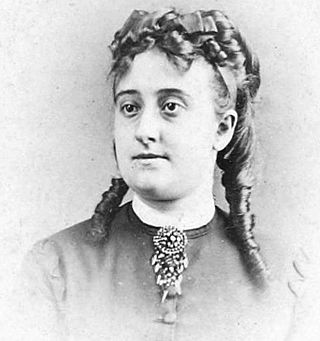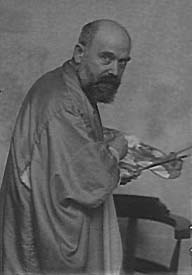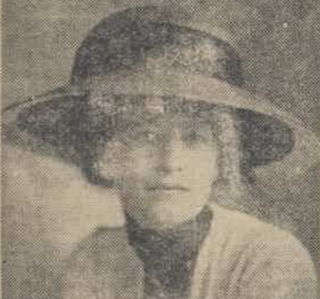
Dorothea ("Thea") Burns is an independent art researcher and former chief conservator of works on paper at the Weissman Preservation Center of Harvard University. She is an expert on pastel art and metalpoint drawing.

Dorothea ("Thea") Burns is an independent art researcher and former chief conservator of works on paper at the Weissman Preservation Center of Harvard University. She is an expert on pastel art and metalpoint drawing.
Burns earned a BA in fine arts from McGill University in 1966 and an MA in art conservation from Queen's University in 1978. She earned her PhD at the Courtauld Institute of Art, University of London. She earned a certificate in the conservation of works of art on paper from the Center for Conservation and Technical Studies at the Fogg Art Museum, Harvard. [1]
Burns joined Queen's University in 1989 where she directed the paper objects component of the master's degree program in art conservation and was a tenured associate professor of paper objects conservation. [1]
In January 2002, Burns was appointed the first Helen H. Glaser Conservator at the Weissman Preservation Center of Harvard University in which capacity she was the senior paper conservator at the Harvard College Library. [1] [2]
Her first book, The invention of pastel painting (2007) was described by reviewer Rosie Freemantle in Journal of the Institute of Conservation as an exceptional work that "covers the topic with an amount of detail unseen in previous works on the subject". [3]
With Philippe Saunier, she is the author of L'art du pastel (2014) which was translated into English and published by Abbeville Press in 2015 as The art of the pastel. The book was described by the publishers as "The only comprehensive history of pastel art". [4]

The conservation and restoration of cultural property focuses on protection and care of cultural property, including artworks, architecture, archaeology, and museum collections. Conservation activities include preventive conservation, examination, documentation, research, treatment, and education. This field is closely allied with conservation science, curators and registrars.

A pastel is an art medium that consist of powdered pigment and a binder. It can exist in a variety of forms, including a stick, a square, a pebble, or a pan of color, though other forms are possible. The pigments used in pastels are similar to those used to produce some other colored visual arts media, such as oil paints; the binder is of a neutral hue and low saturation. The color effect of pastels is closer to the natural dry pigments than that of any other process.

Silverpoint is a traditional drawing technique and tool first used by medieval scribes on manuscripts.

An oil pastel is a painting and drawing medium formed into a stick which consists of pigment mixed with a binder mixture of non-drying oil and wax. Oil pastel is a type of pastel. They differ from other pastel sticks which are made with a gum or methyl cellulose binder, and from wax crayons which are made without oil. The surface of an oil pastel painting is less powdery than one made from gum pastels, but more difficult to protect with a fixative. Oil pastels are bold and bright. They can be blended easily but they can break easily too.

Eva Gonzalès was a French Impressionist painter. She was one of the four most notable female Impressionists in the nineteenth century, along with Mary Cassatt (1844–1926), Berthe Morisot (1841–95), and Marie Bracquemond (1840–1916).

Hand-colouring refers to any method of manually adding colour to a monochrome photograph, generally either to heighten the realism of the image or for artistic purposes. Hand-colouring is also known as hand painting or overpainting.

Lucien Lévy-Dhurmer was a French artist and a leading exponent of fin-de-siècle Symbolism and Art Nouveau. His works include paintings, drawings, ceramics, furniture and interior design.
Julien Vallou de Villeneuve was a French painter, lithographer and photographer.

Victoria Blyth Hill was an American art conservator who lived and worked in the Venice area of Los Angeles. She retired from the Los Angeles County Museum of Art as the Director, Conservation Center in June 2005 when she was honored with an appointment as Senior Conservator Emeritus at the Los Angeles County Museum of Art (LACMA). Subsequently she worked with private clients, including artists, individuals, and museums, and operated an art conservation studio near her home. She was a past president of the Western Association for Art Conservation (1979). Blyth-Hill was elected Fellow of the American Institute for Conservation of Historic and Artistic Works (AIC) in 1990.

A paintings conservator is an individual responsible for protecting cultural heritage in the form of painted works of art. These individuals are most often under the employ of museums, conservation centers, or other cultural institutions. They oversee the physical care of collections, and are trained in chemistry and practical application of techniques for repairing and restoring paintings.

The conservation and restoration of books, manuscripts, documents, and ephemera is an activity dedicated to extending the life of items of historical and personal value made primarily from paper, parchment, and leather. When applied to cultural heritage, conservation activities are generally undertaken by a conservator. The primary goal of conservation is to extend the lifespan of the object as well as maintaining its integrity by keeping all additions reversible. Conservation of books and paper involves techniques of bookbinding, restoration, paper chemistry, and other material technologies including preservation and archival techniques.

Conservation and restoration of objects made from plastics is work dedicated to the conservation of objects of historical and personal value made from plastics. When applied to cultural heritage, this activity is generally undertaken by a conservator-restorer.

Dance at Bougival is an 1883 oil-on-canvas painting by the French artist Pierre-Auguste Renoir, currently in the collection of the Museum of Fine Arts in Boston, Massachusetts, United States. Described as "one of the museum's most beloved works", it is one of three in a collection commissioned by Paul Durand-Ruel. It depicts a scene in the French village of Bougival, about 15 km from the center of Paris, a site utilized by many Impressionists besides Renoir including Claude Monet, Alfred Sisley, and Berthe Morisot.

A photograph conservator is a professional who examines, documents, researches, and treats photographs, including documenting the structure and condition of art works through written and photographic records, monitoring conditions of works in storage and exhibition and transit environments. This person also performs all aspects of the treatment of photographs and related artworks with adherence to the professional Code of Ethics.

Florence Aline Rodway was an Australian artist best known for her portraits. Born in the Tasmanian city of Hobart, she was the second of six children to Leonard Rodway and Louisa Susan, née Phillips. She studied painting at the Hobart Technical College ; after two years her work was sent to London, and she was awarded a three-year scholarship to study painting at the Royal Academy of Arts, London. She is best known for having painted portraits of notable figures in Australian history, including Dame Nellie Melba, William Bridges, J. F. Archibald and Henry Lawson.

Philippe Saunier is a French art historian who is chief curator at the Bureau de l'inventaire des collections et de la circulation des biens culturels at ministry of culture. He was formerly with the Musée d'Orsay and the Musée Picasso in Paris. He is the author with Thea Burns of L'art du pastel (2014) which was translated into English and published by Abbeville Press in 2015 as The art of the pastel.

The conservation and restoration of paintings is carried out by professional painting conservators. Paintings cover a wide range of various mediums, materials, and their supports. Painting types include fine art to decorative and functional objects spanning from acrylics, frescoes, and oil paint on various surfaces, egg tempera on panels and canvas, lacquer painting, water color and more. Knowing the materials of any given painting and its support allows for the proper restoration and conservation practices. All components of a painting will react to its environment differently, and impact the artwork as a whole. These material components along with collections care will determine the longevity of a painting. The first steps to conservation and restoration is preventive conservation followed by active restoration with the artist's intent in mind.

Anna Zemánková was a Czech painter. She was one of the world's most important artists of art brut. However, her high artistic culture, the diversity of her work, and her clear inner vision make her a departure from the original definition of art brut, and she figures in this category as a solitaire. Eighteen of Zemánková’s works were included in the seminal 2013 Venice Biennale. Her works were exhibited in New York, Paris, and on solo exhibitions in Lausanne and Prague. She is represented in the world's most important art brut collections and auctioned at Christie's.

Janice Elaine Merrill-Oldham was an American librarian and conservator who was a preeminent figure in the field of library binding and conservation. She served as Malloy-Rabinowitz Preservation Librarian and director of the Weissman Preservation Center at the Harvard Library from 1995 to 2010. She founded and led the University of Connecticut Libraries' Preservation Department from 1983 to 1995.